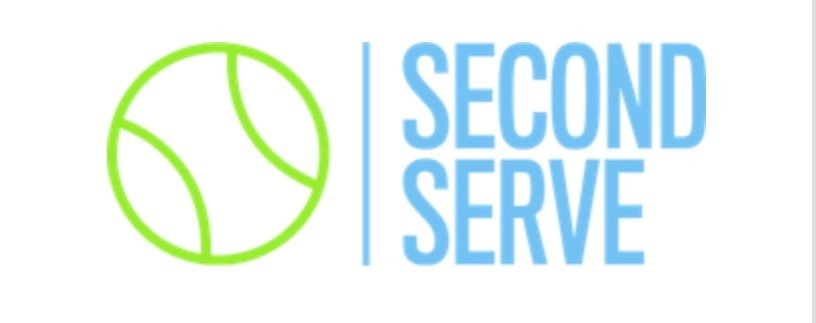If This Doesn’t Convince You . . .
Up Next
ParentingAces Radio ShowSpreadsheet Links
2014 National comparison with 2009 and 2012 -with teams
2014 National comparison with 2009 and 2012 -Individual entries-No Teams
The two spreadsheets above were created by Robert Sasseville, a member of the group that met with the USTA folks in Chicago in October. Robert has run the Girls 14s Nationals for the past 30 years and has been involved in junior tennis in some way, shape, or form for over 40 years, so he’s seen the evolution of the competition calendar and ranking system over a long enough period of time to understand clearly how the 2014 changes will impact our junior players.
The first link shows a comparison between the 2014 national competition opportunities and those in 2012 and 2009, including the new team events. The second link shows the same comparison but without including the new team events so there is an “apples to apples, oranges to oranges” comparison. The spreadsheets are broken down by weeks, so that when viewed, it is obvious how restrictive the current and proposed 2014 schedules are compared to pre-2011.
If, after studying the spreadsheets, you still aren’t convinced that the 2014 calendar will greatly reduce competition opportunities for our juniors, please let me know in the Comments below. I have Robert on stand-by!
The following was written by Robert Sasseville and posted in another article‘s Comments section:
It was today one year ago, December 1, 2011, that I first received a copy of the proposed changes to the National Junior Competition Structure. It was that night that I composed my first “comparison” of competitive opportunity reductions. That night I compared 2014 with 2011, 2010, and the 1980’s, our recent “golden age” of junior tennis. I compared only Level 1 and Level 2 changes.
In the original proposal the Winter and Spring Nationals were eliminated. Both remaining Level 2 Nationals were reduced to 64 draws, while The Nationals (Hard Courts) were reduced to 128 draws and the National Clay Courts were moved to Memorial Day weekend and reduced to 64 Draws. Depending on age group the Level 1 reductions from 2010 were 75% for 12’s, 60% for 14’s, 59% for 16’s, and 58% for 18’s. Sweet Sixteen’s weren’t counted because they were automatically entered into the succeeding Level 1 National.
The Level 2 events were all reduced from 16 events with 64 players each in 2010 to 6 events with 32 players each in 2014. That was a reduction for all age groups of 81.25%.
The National Junior Competition Schedule that passed in March had some changes, like not moving the Clay Courts to May and adding a 32-draw Spring event for 12’s, 14’s, and 16’s, so our updated numbers have changed as modifications occurred.
To get a picture of how the schedule changes will affect playing opportunities for juniors, I put together a spreadsheet comparing 2009 with 2012 and 2014. It was not only designed to show percentage decrease in opportunity, but also the event distribution. Because it was laid out in a 52-week format, the flexibility inherent in the 2009 schedule contrasted with the rigidity of the 2014 schedule was readily apparent.
The original comparisons were based on National “developmental” opportunities, which meant that a single player could enter a tournament with the opportunity to play another player from anywhere in the United States. (A player from College Park, Maryland could possibly have opponents from Spokane, WA, Houston, TX, and San Juan, PR, or any other location within the United States.) In our original computation we included the proposed 2014 Winter Team Championships, although they are really not individual events.
We did not include 2014 Regionals in the computation, because they are “National” in respect to “point opportunities” only, as opposed to the current events labeled “Regional” which currently have no geographic restrictions, and are truly “National”.
In this document we expanded the spreadsheets and looked at both the individual events, the team events, as well as the new ‘Regional’ events and computed percentages based on individual and team events, separately and together, as well as, including the new “Regionals”.
It all depends on one’s definition of “National”.
If “National” means you have the possibility of playing anyone from anywhere …..
- The range of reduction percentages from 2009 to 2014 for Individual events is 82.47% to 86.75%.
- The range of reduction percentages from 2009 to 2014 for Individual and team events combined is 71.00% to 80.75%.
If “National” means the tournament has “National” or “Regional” in the title, and you will receive National points …….
- The range of reduction percentages from 2009 to 2014 for Individual events is 60.73% to 65.90%.
- The range of reduction percentages from 2009 to 2014 for Individual and team events combined is 51.24% to 61.65%.
Another reduction, for those defining “National” opportunities using the criteria that National Points are available, is the fact that the number of Sectional events offering “National” points has been reduced by 50%. Each section’s number of events carrying National points has been reduced from 12 to 6. Even though the events eliminated were Level 5, elimination of 6 events spread throughout the year reduces opportunities for players whose schedules are restricted by school or other commitments.
If you are defining “National” by the opportunity to acquire National Points, you might want to consider exactly what National Points and National Rankings will do for you in 2014.
Already, National Rankings are basically a tool used by the USTA online entry system for player selection and seeding. Having a “National” ranking has devolved to the point where its only real value is in the selection process for “National” events.
Seldom does one hear people talk about National ranking, particularly as a player reaches college age. Now people mention, or aspire to be, “Blue Chips”, “5 Stars”, “4 Stars”, etc. USTA Rankings have become irrelevant for college recruiting purposes because they don’t take into account the quality of play. Once USTA moved away from a merit-based head-to-head ranking system, the value of the ranking secured by point acquisition is merely the value granted to it by USTA. The value is that if you have more points, you will be admitted ahead of someone who has fewer.
Additionally, the number of events accepting entrants based on a player’s National ranking shows a staggering decrease. The events per age group admitting players via National ranking in 2014 compared to 2009 and 2013 are:
- 12’s 28 in 2009 vs. 12 in 2013 and 3 in 2014
- [2 National Selection tournaments (96 players each) and the Spring National event (32 players)] Reduction: 89.3% (2009); 75% (2013)
- 14’s 29 in 2009 vs. 12 in 2013 and 6 in 2014
- [2 National Selection tournaments (96 players each), 2 Sweet 16 (16 players each), Winter Team event (64 players), and the Spring National event (32 players)] Reduction: 79.3% (2009); 50% (2013)
- 16’s 31 in 2009 vs. 12 in 2013 and 6 in 2014
- [2 National Selection tournaments (96 players each), 2 Sweet 16 (16 players each), Winter Team event (64 players), and the Spring National event (32 players)] Reduction: 80.6% (2009); 50% (2013)
- 18’s 32 in 2009 vs. 12 in 2013 and 3 in 2014
- [2 National Selection tournaments (96 players each), Winter Team event (64 players)] Reduction: 89.3% (2009); 75% (2013)
Imagine being a rising 17- or 18-year-old and having your National Ranking used for admittance to only 3 National level events for all of 2014, when in 2013 there had been 12 events played in 10 different months that admitted you via your National Ranking.
So, one thing is certain. National individual opportunities for all will be reduced anywhere from 51% to 86%, depending on your age group and your definition of “National”.
The numbers of events where your National Ranking will have any significance at all will drop by 79.3% to 89.3%, or 50% to 75%, depending on which year you choose as a comparison.
Severely reducing the number of events making selections based on USTA National standing serves to diminish the value of a USTA National ranking, and therefore the value of events that carry National points, but no National developmental opportunities (e.g., 2014 Level 3 and Level 4 Regionals).
While there may be argument over the exact percentages, there is no argument that the operative word for 2014 is REDUCTION.












